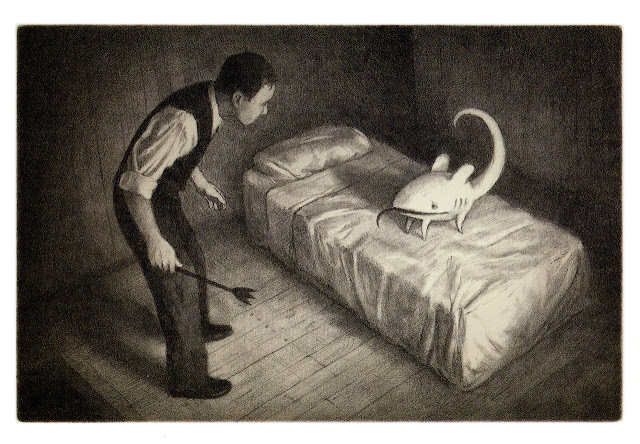Week 1: The Arrival by Shaun Tan
In a visual comic like The
Arrival, each frame, full illustration and detail replace the words that
would paint the pictures in the heads of the reader. Each square frame is like
a sentence that describes the minute actions or events taking place where the
protagonist goes. For instance, the first chapter only shows, what a new reader
might think, is random objects.
Shown below you can find these “random objects”
scattered around the picture as if you would read a book and the author would
help describe the surrounding environment. These random objects become concrete
facts building the world in a full picture.
Majority of the time, these individual
descriptions that the square pictures show would also incorporate surrounding environment
actions such as the photo shown below. Not all pictures show the protagonist,
instead it shows people that the viewer can assume are immigrants holding their
own luggage heading off the boat similar to the character. Each picture acts
like a sentence helping explain in one way or another the reason and motivation
for whatever the protagonist is doing or whatever is going on around him.
These square “sentences” can also be explained
as frames. Although what is shown is not said in writing, each picture is like
a frame in a storyboard. The movements are not fully illustrated but the main key
frame tells it all. For instance, when the daughter wakes up from bed it’s only
shown in three pictures but each action correlates to a key frame of movement
when getting up. Majority of the time the actions are almost like common sense
even though what is illustrated seem fictitious with the oddly shaped
buildings, creatures and food, the viewer can still associate them to something
they have seen or done before. That’s what makes this book descriptive even
without words. Its pictures can be translated universally.





Comments
Post a Comment